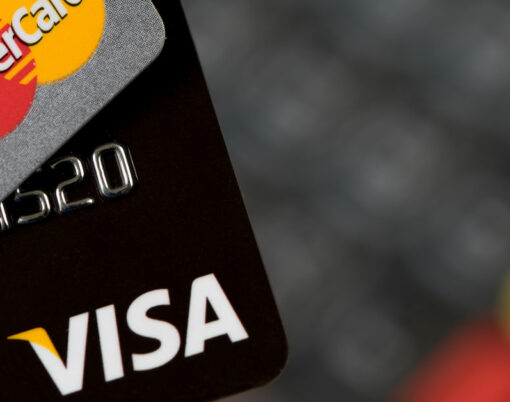Cryptocurrencies may well have once been considered a strange creation that was unlikely to ever take off, but in 2022, these disruptive, decentralized digital assets have officially gone mainstream, and amateur investors of all ages are clamouring to get a slice of the pie.
If you’re one of the many who are looking to buy Bitcoin this year and establish a cryptocurrency portfolio, then you might be wondering where to start – and more importantly, how to give yourself the best chance of seeing success. And while there are various schools of thought on the matter, most experts will agree that the key is not to focus on the world’s largest cryptocurrency alone. While Bitcoin has all but become a household name, it is now far from the only opportunity available to crypto investors, and building a portfolio that takes advantage of a range of different coins could be the key to making the biggest gains long-term.
Here, we take a look at the essential steps to building a crypto portfolio this year – from the basics to the best-kept secrets.

Essential steps to building your crypto portfolio
A crypto portfolio follows your investments primarily in cryptocurrencies and crypto financial products, whereas an investment portfolio tracks your investments in a variety of financial assets. With a dependable cryptocurrency portfolio, you can buy Bitcoin and stay ahead of the turbulent markets.
A well-thought-out and well-balanced portfolio can help you to get the most out of your money. Here are five essential steps to buy Bitcoin and start building your crypto portfolio.
1. Determine your risk tolerance
The first thing to determine when building your portfolio is how much money you’re willing to allocate to invest in Bitcoin, and what kind of returns you’d like to see from your crypto assets. Whilst you might be eager to maximise your returns, if you’re risk-averse then you might find you need to lower your expectations – so working out your risk tolerance before you get started is key.
To mitigate risk, choose a mix of high-risk investments and medium- and low-risk assets, as this will aid in the placement of stop-loss orders. When you establish a price at which your asset will be automatically sold should its value drop that low, you’re limiting the amount of money you’ll lose if the price tumbles further. However, before placing a stop-loss order, consider the asset’s volatility, as an asset’s value can occasionally rise as quickly as it falls. This is particularly true when it comes to Bitcoin, and we’ve seen plenty of dramatic spikes and dips to date – so we can likely expect more of the same in 2022.
Another important factor to consider when starting out in the crypto world is how long you’re prepared to sit on your investment – that is to say, the length of time you’re prepared to wait to see some returns. While a quick profit would be ideal for many, it often isn’t a realistic expectation, and making the biggest profits will involve playing the long game.

2. Conduct thorough research
Doing extensive research before you start buying Bitcoin (BTC) will help you to grasp the fundamentals of your potential investments. Having a clear understanding of what you’re investing in is crucial to building a productive crypto portfolio, and in the long term, conducting a thorough study on how a currency is trading, or on current patterns, will benefit you.
Learn to analyse the market, which is the driving force behind any cryptocurrency’s rise or fall. Cryptocurrency exchanges trade hundreds of different currencies, so assessing the conversation surrounding assets that are of interest to you can help to provide you with a good picture of their current performance and future potential so that you can make an informed choice about whether or not to invest, and when might be best to do so.
3. Research the types of cryptocurrencies
You’ve probably heard of Bitcoin, but the crypto market has grown dramatically since this leading digital asset first burst back onto the scene in the early 2000s, and today, there are thousands of alternatives, or ‘alt-coins’ to consider, too.
Altcoins have provided variety to the crypto market, and there are now more opportunities than ever as a result. USD Coin (USDC), for example, is a stablecoin pegged to the US dollar that allows investors to take advantage of 9 per cent annual rewards when held on Voyager. Decentralised Finance, or DeFi, is another major crypto opportunity, in which networks allow for decentralised borrowing, lending, and exchanges – so don’t be afraid to do your homework and shop around before simply investing in the obvious choice and leaving it at that.
Altcoins span a wide spectrum of hobbies and interests, from sports and gaming to entertainment, and some, like Shiba Inu, even function as partial charities or strive toward environmentally sustainable goals. So, if you have a particular interest then it’s worth looking into whether you could turn your hobby into a profit by investing in the relevant cryptocurrencies and coins.

4. Invest and diversify your portfolio
Once you’ve designed your objectives and have done your research, you’ll likely now have a list of potential assets you’re considering investing in to meet your financial goals. If you don’t, it’s time to diversify.
According to teslacoin, to mitigate the volatility of your small market cap investments, you can diversify your portfolio with mid-cap and large-cap assets. Stablecoins are also considered a viable investment and will reduce the volatility of the cryptocurrency markets.
The level to which you should diversify is debatable, and opinion is divided amongst experts – but it’s important to do so to some degree to avoid putting all of your eggs into one basket. Holding a variety of crypto assets (including stablecoins) and rebalancing your asset allocation on a regular basis could help you lessen the risk of your investments across the board – so don’t ignore this vital step or you could find yourself regretting it later.
5. Keep a regular eye on your portfolio
It’s important to track and evaluate any changes in your assets that could affect your outcomes once you’ve constructed your baseline crypto portfolio. To stay on pace with your financial goals, look at it daily to keep an eye on any fluctuations, and be sure to be receptive to any new opportunities that might arise, as these could change the game.
For long-term success, be ready to rebalance your portfolio on a regular basis and bring it back in line with your long-term goals – which, in turn, may well evolve and grow along the way.
Disclaimer: Investing money carries risk, do so at your own risk and we advise people to never invest more money than they can afford to lose and to seek professional advice before doing so.






















